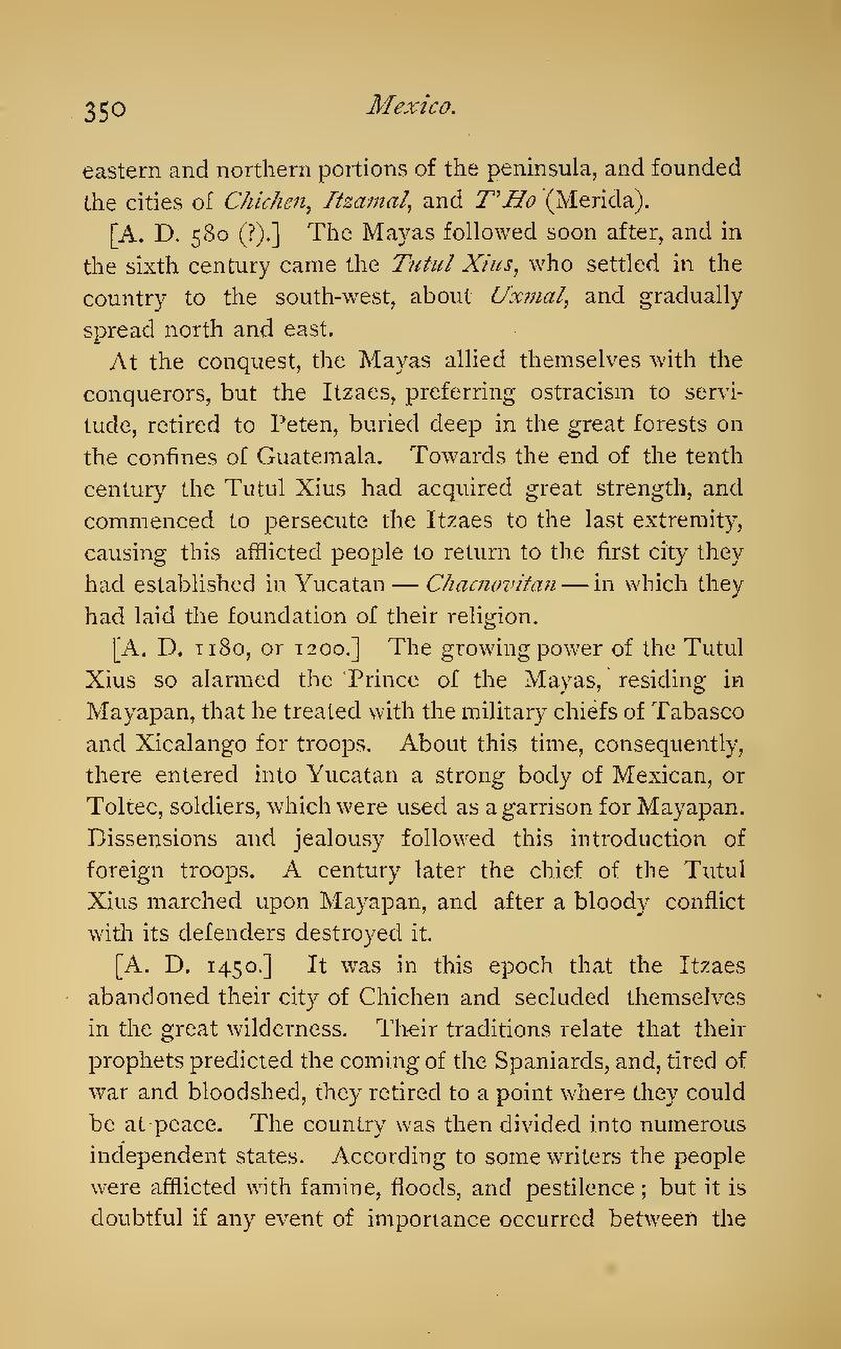eastern and northern portions of the peninsula, and founded the cities of Chichen, Itzamal, and T'Ho (Merida).
[A. D. 580 (?).] The Mayas followed soon after, and in the sixth century came the Tutul Xius, who settled in the country to the south-west, about Uxmal, and gradually spread north and east.
At the conquest, the Mayas allied themselves with the conquerors, but the Itzaes, preferring ostracism to servitude, retired to Peten, buried deep in the great forests on the confines of Guatemala. Towards the end of the tenth century the Tutul Xius had acquired great strength, and commenced to persecute the Itzaes to the last extremity, causing this afflicted people to return to the first city they had established in Yucatan—Chacnovitan—in which they had laid the foundation of their religion.
[A. D. 1180, or 1200.] The growing power of the Tutul Xius so alarmed the Prince of the Mayas, residing in Mayapan, that he treated with the military chiefs of Tabasco and Xicalango for troops. About this time, consequently, there entered into Yucatan a strong body of Mexican, or Toltec, soldiers, which were used as a garrison for Mayapan. Dissensions and jealousy followed this introduction of foreign troops. A century later the chief of the Tutul Xius marched upon Mayapan, and after a bloody conflict with its defenders destroyed it.
[A. D. 1450.] It was in this epoch that the Itzaes abandoned their city of Chichen and secluded themselves in the great wilderness. Their traditions relate that their prophets predicted the coming of the Spaniards, and, tired of war and bloodshed, they retired to a point where they could be at peace. The country was then divided into numerous independent states. According to some writers the people were afflicted with famine, floods, and pestilence; but it is doubtful if any event of importance occurred between the
